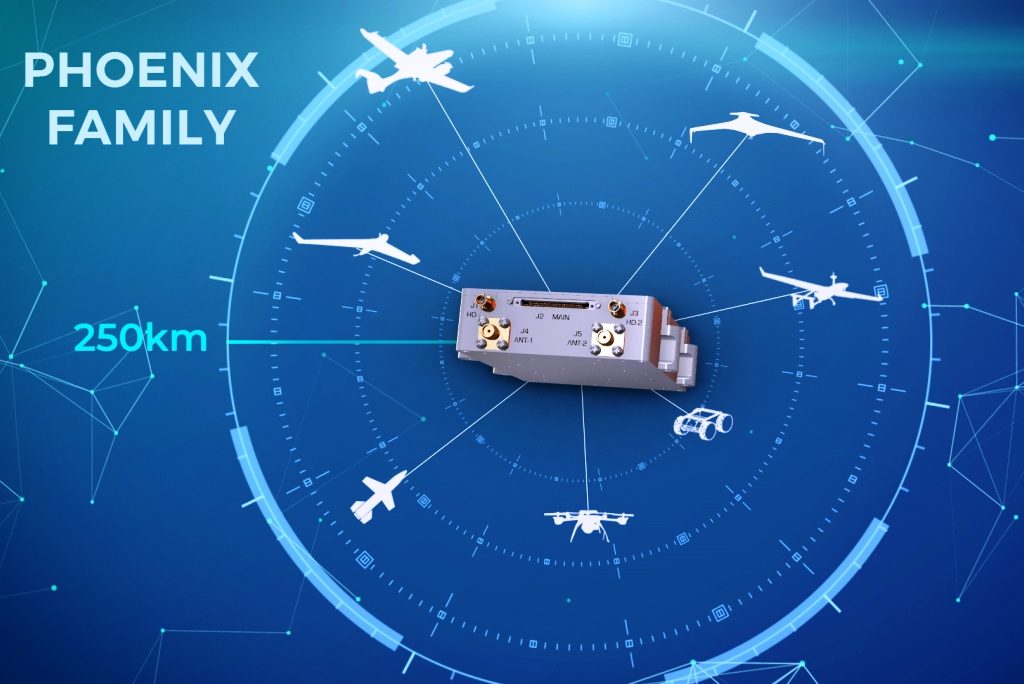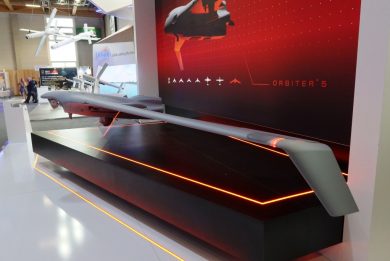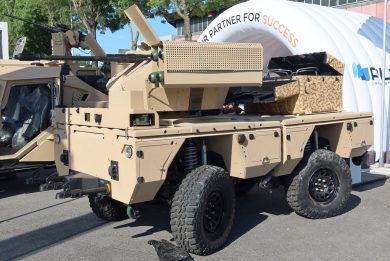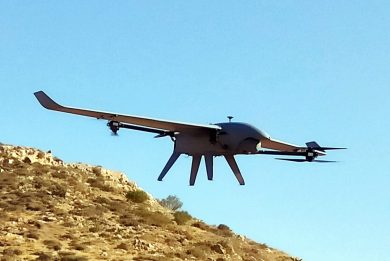
Phoenix: an evolutionary data-link family from Commtact
In the last couple of years Commtact, the Israeli company specialised in advanced wireless communication solutions for defence, homeland security and industry, has changed its focus, shifting from a project-oriented approach to a product-oriented one. “We understood that our customers were looking for solutions capable to solve critical communication issues on various layers,” Ariel Kandel, the company CEO, told EDR On-Line. Operational requirements asked for communication systems with zero latency, capable to operate with all types of payloads, ensuring a constant and fully reliable flow of voice, data and video communications at any moment. Based on those considerations the company, headquartered 10 km south of Tel Aviv, developed a family of data-link available in three different versions, depending on range, which ensures multi-domain operational capabilities and is designed to respond to the needs of the years to come.
The new Phoenix data-link family comes in three versions, Phoenix SR, Phoenix MR and Phoenix LR, the two-letter acronyms obviously indicating short, medium and long range, which in terms of distances means up to 40 km, up to 100 km, and up to 250 km respectively. Usually data-links are conceived thinking mostly to ground-to-air communications, however with its Phoenix Commtact considers also land and sea requirements. The three versions exploit 90% of common building blocks and are interoperable on the field.
The Phoenix currently operates in the 4.4-5.9 GHz, that is C-band, and ensures a data rate of up to 8 Mbps in full duplex, with 2×2 (supporting two streams in each direction) MIMO (Multiple Input-Multiple Output) antennas. COMSEC is based on AES256 (Advanced Encryption Standard with a 256 bits key length) with CBC (Cipher Block Chaining) algorithm, while TRANSEC is ensured by frequency hopping techniques. The waveform is based on the Gaussian Minimum Shift Keying, the data-link fully respecting MIL-STD-461 and MIL-STD-810 testing and environmental standards.
“Phoenix is designed similarly to Software Designed Radios (SDR), and has considerable growth potential, all upgrades to be carried out only updating software,” Moti Albo, Commtact Chief Technical Officer, explains. This means that all the integration work done when the system is first installed on a platform will not be wasted. On-board elements were designed with SWaP (Size, Weight and Power) as a key issue, the outcome being that the transceiver element of the data-link to be installed on the platform is very lightweight; the Phoenix SR weighs 100 grams and is 60 mm long, and the Phoenix MR weighs 300 grams. As for the Long Range version, here the SwaP issue is less important as it is planned to be installed on Special Mission aircraft, which are more weight-tolerant. In the aviation domain Commtact considers as possible platforms drones, loitering munitions, mini UASs, small tactical UASs, MALE/HALE UASs, tactical UASs, helicopters and special mission aircraft, however the Phoenix family can find application also on ground platforms, manned and unmanned, as well as on naval ones.
Of course antennas must also be added in the weight balance. Commtact experts make it clear that no video delay and no stoppage is admitted, therefore the integration phase is key in ensuring full reliability. “Simulation tools are extensively used to establish the best possible layout in order to allow full connectivity at all times, with the platform in any 3D aspect. At least one antenna must always be visible from the ground station, hence the company usually comes up with multiple antenna layouts,” Moti Albo says.
The current version of the Phoenix is mostly aimed at providing point-to-point as well as point-to-multiple-point link, the system being capable to work as relay in order to overcome line-of-sight issues. However, as said, the SDR design will allow the injection of new capabilities at a constant pace. New waveforms, COMSEC and TRANSEC features will be added, extending the coverage to S-band frequencies (2-4 GHz) being also part of the way ahead. Multipath capability is also considered, as well as the capability to form a mesh network. “On this last issue we have to optimise a possible solution, as mesh capabilities tend to steal part of the bandwidth, range also having to be considered, therefore mesh is not always the magic solution,” Ariel Kandel tells EDR On-Line. In its roadmap Commtact will of course exploit the company multidisciplinary capabilities, Phoenix being now available and being there to stay for quite a long time, considering its flexibility of use and its growth potential.
Photo



